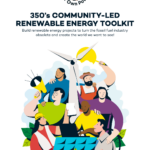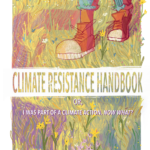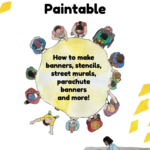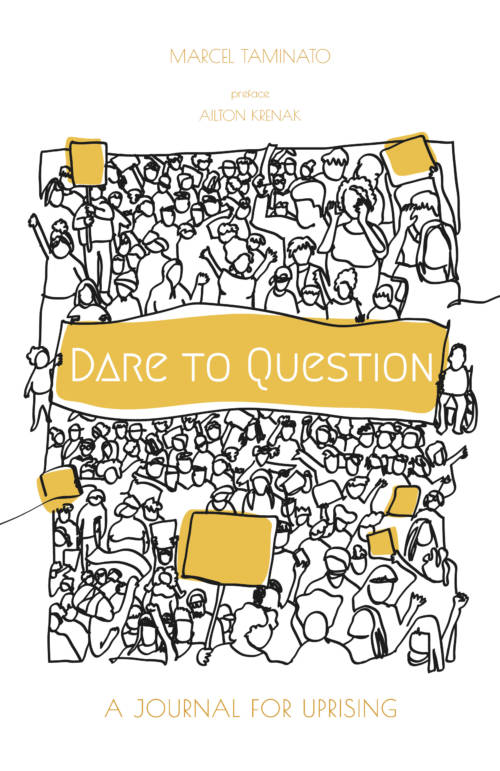Ask most people how they got involved with an environmental activist group, and they’ll tell you that someone talked to them and asked them to get involved.
It can be effective to write letters, send petitions, do rallies, but to really get most people involved, we have to ask them to help us!
The easiest way to do that? Ask them to talk with you and have a one-on-one conversation. Most effective organisers learn to have effective one-on-ones.
The basics of one-on-ones are straightforward:
- Find a time to talk with someone, whether taking a walk, having a formal meeting at an office, playing sports together, or after a religious service;
- Listen to that person to understand where they’re coming from; and
- Make a specific ask tailored to who and where they are (for example sign a petition, bring juice to the next meeting, or speak at an upcoming event).
Think about why you want to meet with them. Do you want to get information, ideas, or perspectives from them? Do you have ideas about what specifically you can ask them? Have some options and think through questions you may want to ask.
Choose the most appropriate way to set-up the one-on-one. This is often based on the relationship you already have with the person. Are they someone that prefers setting things up in person, by phone, by email, or through their social networking site? If your connection to the person is through someone else, can that person introduce the two of you? Ask them about the best way to make the request—would they prefer a phone call, email, facebook message, etc? Make sure you have ways to contact each other in the event that something comes up and the plans need to change.
The one-on-one is not a scripted meeting. There are often unexpected outcomes too, which can be very exciting. For example, the meeting may have been set up to find out information, but you may leave with the person becoming more interested in your organisation. Perhaps they are clear that they want to become a leader, so you schedule a time for them to come into the office to learn more, get trained, or to do some work. Maybe they express concerns or hesitancy that gives you a new perspective on better ways to do your work. Maybe they have skills that can contribute to the campaign that you didn’t think about before. It is better to get more out of a meeting than what is expected, so set realistic expectations and be happy when you are surprised.
Here are some sample questions that can be useful at one-on-one meetings:
- How did you get involved with this issue?
- What do you hope to accomplish in the short term? Long term?
- What, if any, organizations are you involved with?
- What are ways you were hoping to be involved? What do you want to learn?
- Who else do you think I should talk with?
- What do you think it would take to win?
- What kind of support do you need to accomplish your goals?
- What are special interests or skills you could contribute?
Take notes or document the meeting in the way that is most comfortable and effective for you. To be fully present for the meeting, some people take some time at the end of the meeting to review the discussion and write some things down. As you document your meeting, consider what you need to remember months later. File their contact information in a place that is easy to access it again.
Most important: did you agree to do any follow-up with them? Timely follow-up to one-on-ones is important. Be sure to follow through on any tasks that you agreed to. You have invested a lot of time in the one-on-one and the quality and timeliness of your follow-through will often determine whether or not it was worth it. Follow-ups should include specific next steps and deadlines, if any were agreed to, and helpful reminders along the way.
One-on-ones are opportunities to make “asks” of people. An ask is a specific request that is a chance for them to get involved or take on more leadership.
As an example, 350’s Pacific Warrior Blockade needed a place to stay in Sydney for activists who were going to block shipments of coal ships in Australia. It was just weeks before the action and they needed a place to host thirty warriors for over a week — not a small request!
In preparation for the blockade, a few weeks before the action, local organisers held a concert for the Pacific Islanders living in and around Sydney. This was a good opportunity to get the local community involved.
At the end of a group meeting, the organiser of the concert, Koreti Tiumalu, made an ask of everyone present: for them to recruit others, especially to find a pastor to begin the concert. One of the volunteers agreed to do this. She did a one-on-one with the deputy pastor of her church, who agreed to open the concert.
After the successful concert, Koreti asked that volunteer if she would see if the pastor’s church would be willing to host the warriors. The volunteer agreed, and again set-up another one-on-one meeting with the deputy pastor. The deputy pastor was thrilled by the concert and set-up a longer one-on-one with the senior pastor. This time, the volunteers’ ask was for the deputy pastor to give encouragement for the senior pastor.
The next one-on-one meeting with the senior pastor was an important one. The volunteer (who is now on her third one-on-one!) asked the senior pastor what he heard about the concert (good things) and he asked which islands people were coming from. Eventually, she explained they were still struggling with accommodation and asked if the church could help host.
He said yes. This is important: he said yes because he was directly asked. We can’t assume people know our needs or will just offer to meet them.
The result was great. Not only did the church host the warriors, but the senior pastor got full support from the congregation. The church community set-up the space before the warriors arrived, including mattresses and bedding. One of the church members was a chef and even made breakfast, lunch, and dinner for all the warriors, refusing any payment because this was a way they could support the campaign against climate change and protect their islands.
This is what social change looks like—getting people to offer the things they can for a bigger cause. We have to make specific, clear asks. And, one-on-ones build on each other, allowing us to make bigger asks along the way—instead of just asking for the big thing right away.
So go out there and do one-on-ones!



